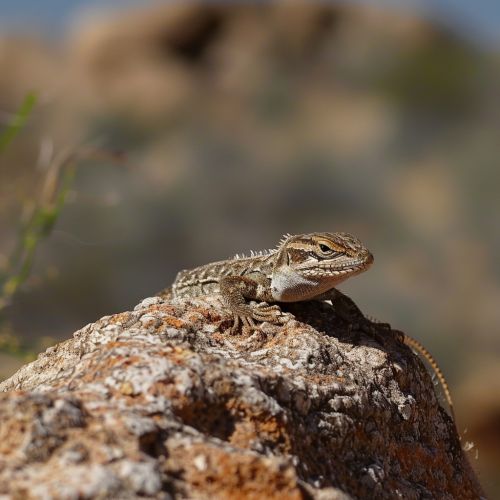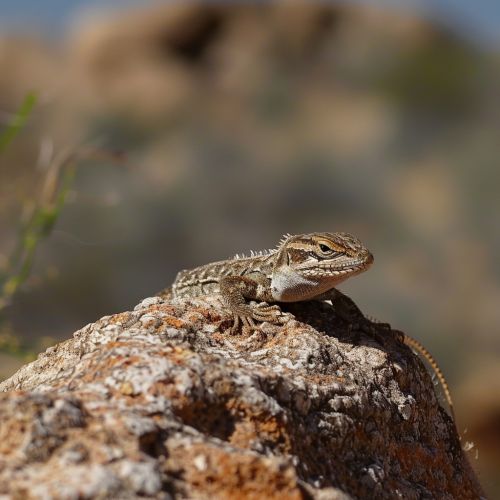Animal Thermoregulation
Introduction
Animal thermoregulation is the process by which animals maintain their body temperature within certain boundaries, even when the surrounding temperature is very different. This physiological capability is essential for the survival of many species, as it allows them to function optimally in diverse environments. Thermoregulation involves a complex interplay between behavioral, physiological, and anatomical adaptations.
Mechanisms of Thermoregulation
Thermoregulation mechanisms can be broadly classified into two categories: endothermy and ectothermy.
Endothermy
Endothermic animals, also known as warm-blooded animals, generate heat internally through metabolic processes. This group includes mammals and birds. Endotherms maintain a stable internal temperature regardless of external conditions. Key mechanisms include:
- **Metabolic Heat Production**: Endotherms produce heat through metabolic processes such as cellular respiration. The hypothalamus plays a crucial role in regulating these processes.
- **Insulation**: Fur, feathers, and fat layers provide insulation, reducing heat loss.
- **Vasodilation and Vasoconstriction**: Blood vessels can expand (vasodilation) to release heat or contract (vasoconstriction) to retain heat.
- **Sweating and Panting**: These mechanisms facilitate evaporative cooling.
Ectothermy
Ectothermic animals, or cold-blooded animals, rely on external environmental conditions to regulate their body temperature. This group includes reptiles, amphibians, and fish. Key mechanisms include:
- **Behavioral Adjustments**: Ectotherms often bask in the sun to absorb heat or seek shade to cool down.
- **Color Change**: Some ectotherms can change their skin color to absorb more or less heat.
- **Thermal Conductance**: Ectotherms can alter their body posture to increase or decrease heat absorption.
Behavioral Adaptations
Behavioral adaptations play a significant role in thermoregulation for both endotherms and ectotherms.
Migration
Many animals migrate to avoid extreme temperatures. For example, birds often migrate to warmer regions during winter.
Hibernation and Torpor
Some animals enter a state of reduced metabolic activity to conserve energy during unfavorable conditions. Hibernation is a long-term state seen in animals like bears, while torpor is a short-term state seen in animals like hummingbirds.
Burrowing and Nesting
Animals like meerkats and rabbits build burrows to escape extreme temperatures. Birds and mammals construct nests to provide a controlled microenvironment for their young.
Physiological Adaptations
Physiological adaptations are internal processes that help animals regulate their body temperature.
Countercurrent Heat Exchange
This mechanism involves the transfer of heat between blood vessels flowing in opposite directions. It is commonly seen in the limbs of birds and marine mammals, allowing them to retain heat.
Brown Adipose Tissue
Brown adipose tissue is specialized for heat production. It is rich in mitochondria and is found in hibernating mammals and newborns.
Shivering Thermogenesis
Shivering generates heat through muscle contractions. It is a rapid response to cold exposure in endotherms.
Anatomical Adaptations
Anatomical adaptations are physical features that aid in thermoregulation.
Surface Area to Volume Ratio
Animals in cold climates often have a lower surface area to volume ratio to minimize heat loss. Conversely, animals in hot climates have a higher ratio to facilitate heat dissipation.
Appendages
Large ears in animals like elephants help dissipate heat, while small ears in Arctic animals reduce heat loss.
Specialized Structures
Some animals have specialized structures like the rete mirabile in fish, which helps in maintaining a stable internal temperature.
Thermoregulation in Different Environments
Thermoregulation strategies vary significantly across different environments.
Desert Environments
Animals in deserts face extreme temperatures and water scarcity. Adaptations include nocturnal behavior, burrowing, and efficient water conservation mechanisms.
Aquatic Environments
Aquatic animals face challenges related to heat loss due to water's high thermal conductivity. Marine mammals have thick blubber layers, while fish use countercurrent heat exchange.
Arctic and Antarctic Environments
Animals in polar regions have adaptations like thick fur, blubber, and behavioral strategies like huddling to conserve heat.
Evolution of Thermoregulation
The evolution of thermoregulation is a complex process influenced by environmental pressures and ecological niches.
Origin of Endothermy
The transition from ectothermy to endothermy is believed to have occurred independently in mammals and birds. This transition provided advantages like sustained high activity levels and the ability to inhabit diverse environments.
Fossil Evidence
Fossil evidence suggests that early mammals and birds had features indicative of endothermy, such as high metabolic rates and insulating structures.
Challenges and Future Directions
Understanding animal thermoregulation has implications for conservation, climate change adaptation, and biomedical research.
Climate Change
Climate change poses significant challenges to thermoregulation, as animals must adapt to rapidly changing temperatures and altered habitats.
Conservation Efforts
Conservation strategies must consider the thermoregulatory needs of species, particularly those in vulnerable environments.
Biomedical Applications
Research on thermoregulation has potential applications in medicine, such as developing treatments for hypothermia and hyperthermia.
See Also


